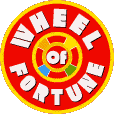

Well, as you might be able to tell, I'm a big fan of Wheel Of Fortune, which in 1998 celebrated the production of their 3000th nighttime show. What you may not know is that the show first aired in 1975 on the NBC network. Not with Pat Sajak and Vanna White, but with host (then better known as country music artist) Chuck Woolery (best known for hosting Scrabble and the original Love Connection) and Susan Stafford. Chuck hosted from the beginning of the show's run on January 5th 1975 through December 24th of 1981. Susan stayed on an extra year with the host that everyone's grown to know and love, Mr. Pat Sajak, from "day one" to October 22, 1982.

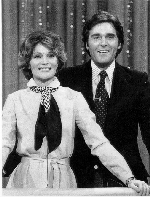
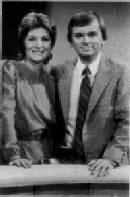
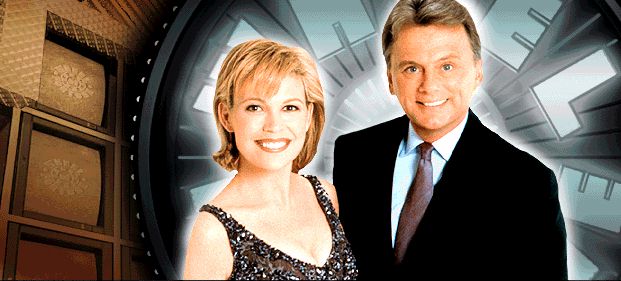
Brief History
(as written on Mike's Wheel Of Fortune Page)
When Merv Griffin first invented "Wheel," he called the show "Shopper's
Bazaar." Anyone who hasn't seen (or doesn't remember) the show before 1990
won't know why it was called this - in the '70s & '80s, "Wheel" had
winning contestants spend their earnings by buying merchandise displayed
on stage which were set up in different themed segments (the travel boutique, the
den, etc). The two men who hosted the pilot episodes for thisshow were Edd
Byrnes, who previously had played "Kookie" on "77 Sunset Strip," and country
music singer-songwriter Chuck Woolery, who ended up getting the job.
In
1981, Chuck wanted a pay raise from $300,000/year to $500,000/year.
Merv only offered him $375,000/year, so Chuck walked. Thanks
to Chuck's greed, America was then introduced to Pat Sajak. Sajak had been
a weatherman at KNBC-TV in Los Angeles, and when Merv saw him on TV, he
knew that this was the guy he wanted. He's been hosting "Wheel" now for over
fifteen years, and I hope to see the show run another fifteen or more.
Here are some video captures from one of the pilot episodes as hosted by Edd Byrnes. Note the different clicker arrows used and the "buy a vowel" space.
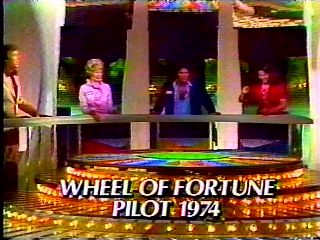
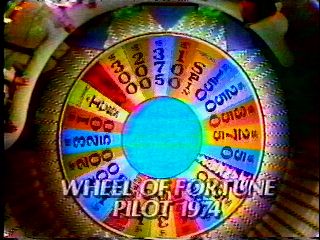
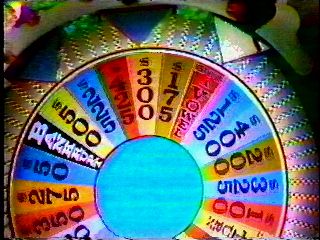
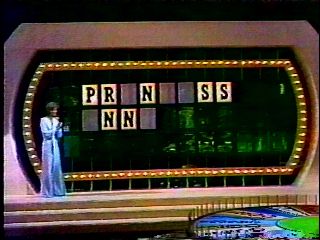
BUY A VOWEL?!?
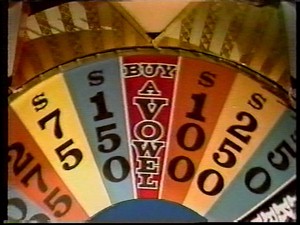
Yes, you saw that correctly...here's a little something about vowels and the "Buy A Vowel" space from "Wikipedia.com"...
If a player has at least $250 in cash, the player can pay that amount to have all instances of a single vowel (A, E, I, O, or U) in the puzzle revealed. If the letter is not in the puzzle, the player's turn ends, but the $250 must still be paid. The contestant does not pay for every copy of the vowel revealed; in the above example, if the contestant guessed E, although 2 E's are in the puzzle, the contestant would not have to give up $500.
Very early in Wheel's U.S. network run, contestants could also ask for a vowel by landing on a space marked "Buy a Vowel" in order to ask for a vowel (the space had also been featured in both the 1973 and 1974 pilots). This was deemed redundant (not to mention that any contestant who landed on said space but didn't have enough money to buy would lose his turn), and the space was scrapped in favor of a dollar amount before the show logged one month on the air. When the daytime show moved to CBS in the seventh season where the shopping portion of the daytime show was dropped, the wheel was "cheapened" so $50 and $75 wedges came back. The highest value for round one was $500 going to $1250 in the fourth round. As a result, vowels became $200, and then $100 by 1991. Also in the middle of the eighth season, the $50 and $75 wedges were dropped, so the minimum dollar value would be $100, enough to buy a vowel in 1991.
Vowel buying is very common on the U.S. version, mainly since many puzzles have large numbers of vowels, particularly E's (it is not uncommon to see five or occasionally even more of a vowel, especially E, in a larger puzzle—the record appears to be 11 E's). It is rarer in the UK and Australia.
Some argue that, because of the inflating dollar values, the amount spent for vowels should increase. Indeed, the lowest value on the wheel nowadays is $300; the smallest value started out at $25, then eventually $100, $150, and finally $200. However, when one accounts for inflation, $250 in 1975 would be worth almost $1,000, meaning if you use this inflated price to buy a vowel with the current values on the wheel, most of the time you'd have to spin the wheel twice and/or get more than one instance of a letter to be able to buy a vowel — which, it should be pointed out, was exactly the situation in 1975. (For those who are interested, if they consistently kept raising the cost of the vowel to keep up with inflation, and $250 was the value now, vowels would have originally cost approximately $65.)
The phrase "buy a vowel" has entered the public domain, meaning "get a clue". It is a sarcastic bit of advice for the clueless.
But anyway, I've fallen in love with the show. So much that back in 6th grade, I created a wheel of my own as an art project. However, this is one project that I've kept up through the many changes in the configurations of the wheel. (At least when I've had the time...not so much the past couple years though.) I even created a layout somewhat based on that of the current show. The twist is that it was for give-aways at the Cub Foods store in Ames where I work, and instead of hundreds of dollars, this wheel deals with cents.
So, here are some shots of the "Cub Cents Wheel" in the third round configuration.


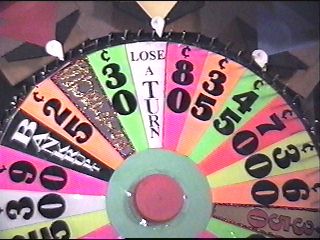
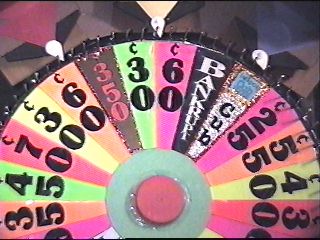
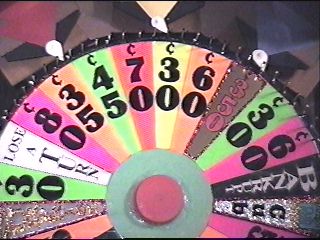
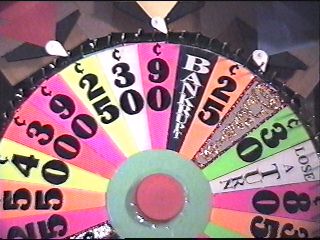
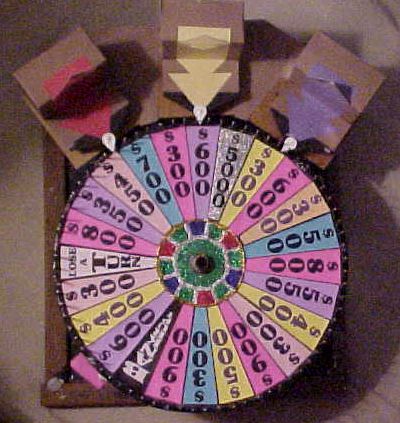
This is my original
design, hiding under the layout above.
Spin the wheel!
(Quicktime Video - 1.66 MB)
Return to SirKrunch's Home Page